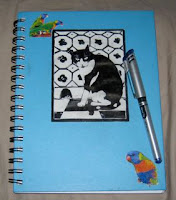Oh. And we get just a peek at Anne Gracie's newest book, which is worth the price of admission all by itself.
Anne Gracie will be GIVING AWAY A COPY OF HER NEW BOOK, The Accidental Wedding, to some lucky person in the comment trail.
(Forgive me for shouting. It's just cool, is all.)
******
Anne Gracie here.
Jo kindly invited me on as a guest blogger because I have a book coming out this month.
But Jo's blog is mostly about writing, so it doesn't seem quite fair to do a "Rah, rah, buy my book" kind of blog. Instead I thought I'd talk about training your muse and Dorothea Brande.
 Dorothea Brande was a writer and writing teacher in New York in the 1930's. She wrote a book called Becoming a Writer which is now a classic and is still in print. It was the forerunner to books like Julia Cameron's "The Artist's Way" and others.
Dorothea Brande was a writer and writing teacher in New York in the 1930's. She wrote a book called Becoming a Writer which is now a classic and is still in print. It was the forerunner to books like Julia Cameron's "The Artist's Way" and others.But Dorothea isn't the slightest bit new-agey. Her book is small and slender, her advice practical and quite pithy. The writing style is spare, elegant, and a little old-fashioned in places.
Dorothea is as romantic about the writing process as a dog trainer is about training dogs — with good reason; she's on about training your muse to perform on command. But she also acknowledges there is magic involved — and that you can teach it to come to you. And it’s true.
I can't do justice to her whole philosophy here, but this is my own nutshell version of Dorothea, which I've used on and off for more than ten years.
1) The morning pages.
 | ||
| Anne Gracie's actual notebook |
Write for a minimum of 15 minutes — it doesn't matter what you write. Let your imagination flow freely. Write down your dreams, ideas, random thoughts, snatches of dialogue, stream-of-consciousness, ideas for a story -- don't restrict yourself. It's best if you're still in that half-dreaming, half awake state.
Don't try to revisit what you have written, don't even reread it. All that matters is that you write every morning for at least 15 minutes. The point is to train the unconscious to come to the fore and express itself, and for your imagination to begin to flow and blossom.
When you've finished, look at your schedule for the day, find a time when you can write for at least 15 minutes, and make an appointment to write.
2) The appointment to write
 No matter what, you must keep this appointment. If you're in the middle of something, you must stop and write. If you're ironing and have one more shirt to iron, stop and write. If you're in traffic, pull over and write. Accept no excuses or delays — more on that later.
No matter what, you must keep this appointment. If you're in the middle of something, you must stop and write. If you're ironing and have one more shirt to iron, stop and write. If you're in traffic, pull over and write. Accept no excuses or delays — more on that later. You can either continue with the free flow writing, work on a piece you've already started, write scenes or bits from a novel you're working on, start a short story — it doesn't matter. Again, it's only 15 minutes. Of course you can choose to go longer, but 15 minutes is all that's necessary to keep "the flow" going.
Why keeping these times are important.

I don't know about you, but my unconscious is always full of reasons why I can't write now and why it would be better to put it off and do it later. Keeping this appointment to write trains that expert in procrastination — my unconscious — that there's no point coming up with excuses. This trains the muse to perform on command.
In the early days, the unconscious whines and wriggles and spouts excuses by the dozen. Stay firm, write your morning pages and keep your appointment to write, and soon you'll find it easier and easier to write when you can — and to write well.
What Dorothea has done for me:
 I used to believe I didn't dream a great deal -- only the odd strange one (brought on by cheese or something the night before
I used to believe I didn't dream a great deal -- only the odd strange one (brought on by cheese or something the night before As the morning pages became routine, some miraculous part of my brain started to anticipate the writing and there are times I wake up and find scenes unrolling in my head like a movie, ready to be written.
A number of pivotal scenes in my books have come to me that way.
Here's an example — the scene here is very close to the scribbled down morning pages scene in my notebook.
I must confess I don't always keep up the routine. Usually I "do Dorothea" religiously for a few weeks and once everything starts flowing, the routine gradually drops away. When I slow down or get blocked or have had a period of not writing, I return to Dorothea to get me back on track.
And there's much more to her book than I've mentioned here.
Before I go, here's the promo for my new book:

THE ACCIDENTAL WEDDING
An injured man, a desperate woman...
She saves his life. He fakes amnesia...
Anne Gracie, THE ACCIDENTAL WEDDING Berkley Sensation, October 5th 2010, ISBN 978-0425233825
Thanks, Jo, for letting me visit.
Anne Gracie






































